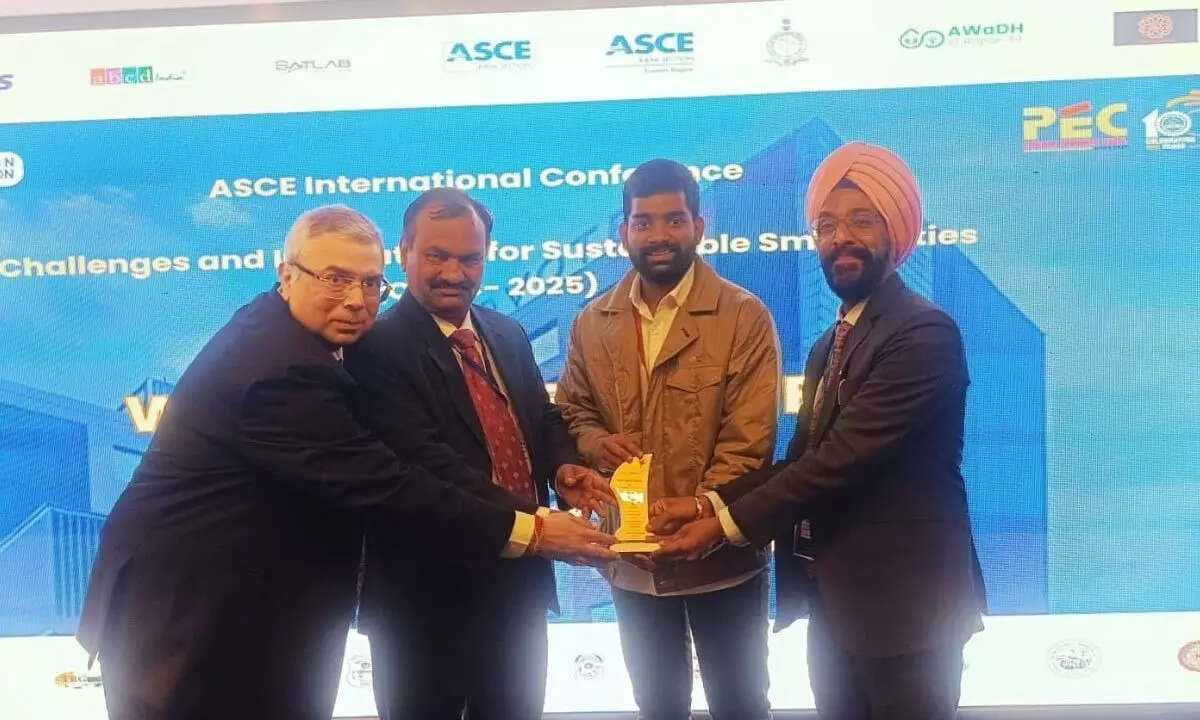Two-wheeler riders 30 times prone to accidents

Hyderabad: In a nation where two-wheelers dominate the road traffic, accounting for nearly 70% of vehicles in cities like Chennai, Jaipur, and Nagpur, the safety of riders has become a pressing concern. Alarmingly, two-wheeler riders are 30 times more prone to accidents than car drivers, leading to a high rate of fatalities and disabilities.
Amidst this backdrop, Sodadasi Rahul, an M Tech student from Mahindra University in Hyderabad, has embarked on a groundbreaking study to address the critical issue of rider distractions. His research, titled "Understanding Driver Distractions in Two-Wheelers Using Eye-Tracker," employs advanced eye-tracking technology to delve into the nuances of rider behavior.
Eye-tracking technology, which utilises cameras and algorithms to monitor where and how long a driver focuses on specific elements, offers invaluable insights into attention patterns. By analyzing eye movements, researchers can infer levels of attention, distractions, and reactions to environmental stimuli.
In Rahul's study, participants navigated an 8.8 km stretch from Bahadurpally X road to Jeedimetla Industrial area. The eye-tracker identified three primary types of distractions:
When riders glance away from the road, when riders remove their hands from the handlebars, when a rider's mind wanders due to factors like deep thought or conversing with a passenger.
These distractions significantly elevate the risk of accidents, underscoring the need for targeted interventions.
Rahul's innovative approach has not gone unnoticed. His paper was honored with the ‘Best Paper Award’ at the International Conference on Challenges and Innovations for Sustainable Smart Cities (CISSC-2025), held at Punjab Engineering College in collaboration with the American Society of Civil Engineers (ASCE).
Reflecting on his motivation, Rahul said, "Having witnessed numerous two-wheeler accidents over the years, I recognized the urgent need to identify the underlying causes. Unlike four-wheelers, two-wheeler riders are more vulnerable, with higher fatality rates. Through my research, I discovered that engaging in secondary tasks while riding is a major contributor to accidents."
The implications of Rahul's findings are profound. By pinpointing the specific distractions that compromise rider safety, his research paves the way for developing targeted interventions, such as awareness campaigns and training programs, to mitigate these risks.
As he continues his research, Rahul remains committed to making a tangible impact on road safety. His work not only highlights the potential of technology in understanding human behavior but also serves as a beacon for future innovations aimed at safeguarding the lives of two-wheeler riders across the nation.

